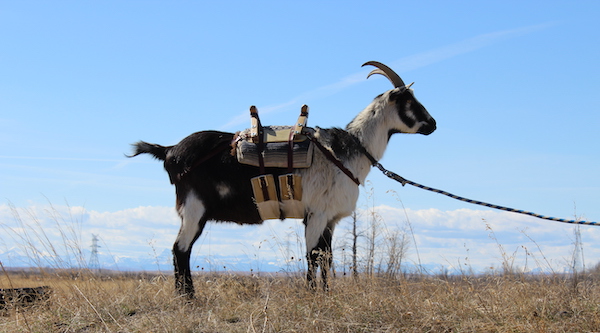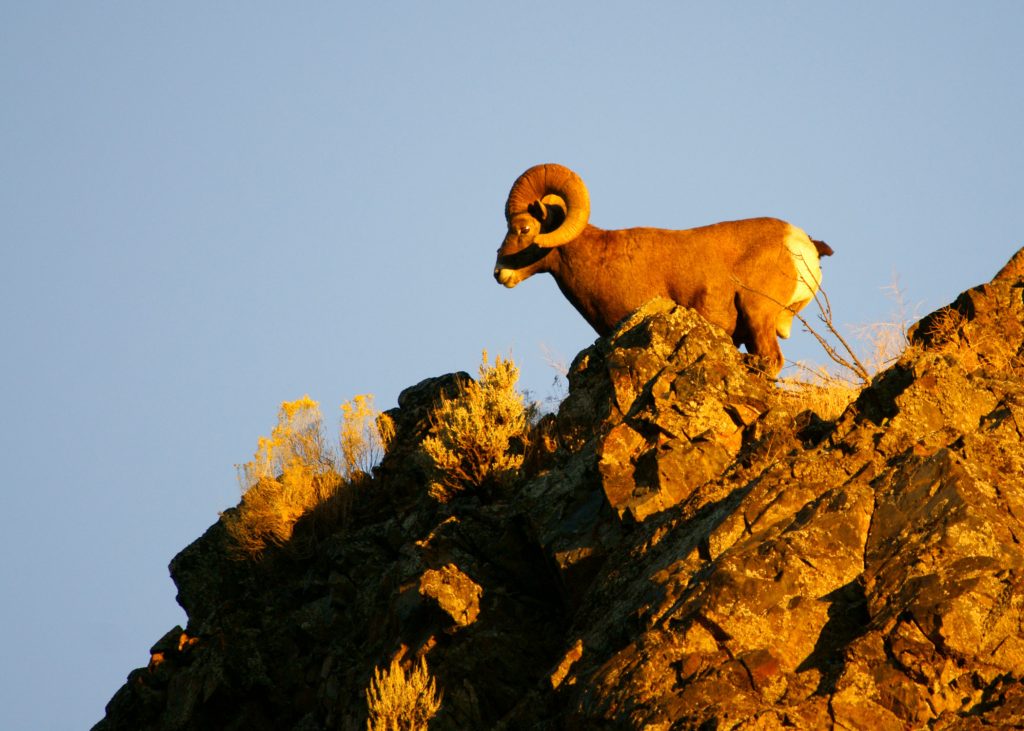WDFW Bans Domestic Goats, Sheep At Wildlife Areas With Bighorns
THE FOLLOWING IS A PRESS RELEASE FROM THE WASHINGTON DEPARTMENT OF FISH AND WILDLIFE
(Editor’s note: See bottom for links to previous coverage.)
The Washington Department of Fish and Wildlife (WDFW) this week adopted a new rule intended to reduce the risk of Mycoplasma ovipneumoniae (Movi) transmission from domestic sheep and goats to bighorn sheep.

The adopted rule prohibits visitors bringing domestic sheep or goats onto wildlife area units where bighorn sheep may be located. The rule applies to select units of the Asotin Creek, Chelan, Chief Joseph, Colockum, Columbia Basin, L.T. Murray, Oak Creek, Scotch Creek, Sinlahekin, Wells, Wenas, and W.T. Wooten wildlife areas, and goes into effect in February 2023.
Pneumonia caused by the Movi bacteria can be lethal to bighorn sheep and reduces lamb survival rates for many years after an initial outbreak. There is no treatment or preventative vaccine.
Past pneumonia outbreaks among bighorn sheep in Washington and other parts of the western United States have been linked to contact between wild sheep and domestic sheep or goats, which can carry the bacteria.

“We’re increasing Movi prevention tactics for wild sheep herds in critical areas of Washington,” said Anis Aoude, WDFW game division manager. “We have taken a targeted approach by ensuring hunters and other visitors may continue bringing domestic sheep and goats, including pack goats, to other areas of WDFW-managed lands without bighorn sheep.”
The adopted rule culminates a months-long process to develop and refine the rule, including a public comment period, public hearing, and a state environmental review. The rule’s adoption this month followed the Department Director’s approval in early December 2022.
To reference the full rule, visit WDFW’s website.
The following are previous blogs I’ve done on the issue of Movi transmission to bighorns:
May 20, 2019: Sheep Pneumonia Kills 11 Okanogan Bighorns; Monitoring Continues
October 12, 2020: Bighorn Managers Fear Disease Outbreak In Central Washington Herd
October 13, 2020: Domestic Sheep Was Far From Grazing Area When It Encountered Quilomene Bighorn Rams
October 13, 2020: Dozen Bighorns Removed From Quilomene Herd; Disease Test Results Due
October 14, 2020: Quilomene Bighorns Test Negative After Run-in With Domestic Ewe; Live Captures To Be Considered
October 15, 2020: WDFW Asks Public For Reports Of Sick Bighorns In Quilomene As Biologists Also Monitor Herd
October 20, 2020: More Bad News For Washington Bighorns: Dead Cleman Mtn. Lamb Tests Positive For Pneumonia
October 23, 2020: More Ram Permits For Bighorn Herd After Pneumonia Confirmed In Dead Lamb?
November 10, 2020: Extra Ram Permits Granted For Central WA Bighorn Herd After Deadly Disease Found In Lamb
February 11, 2011: WDFW To Capture, Collar Yakima Canyon Bighorns For New-to-WA ‘Test And Remove’ Process In Battle Against Wild Sheep Pneumonia
October 1, 2021: Deadly Bighorn Sheep Disease Confirmed In Quilomene Herd Lamb

